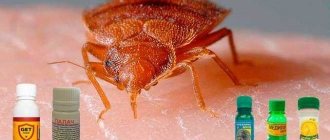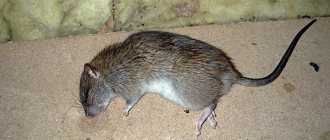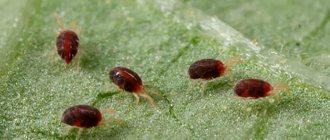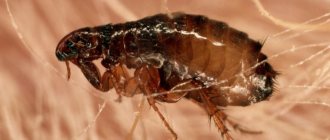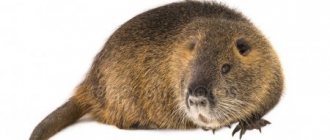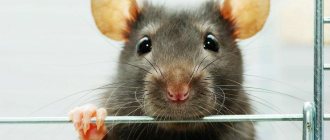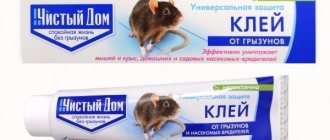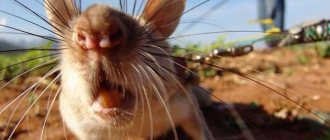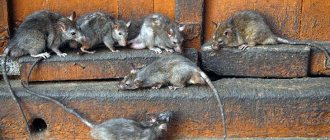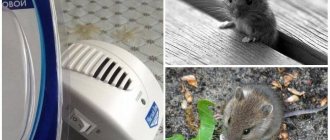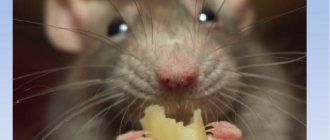What could be worse than having rats in your home? And not only because of the disgust and disgust that these animals cause in most people.
Rats are a real natural disaster. Not only are they carriers of many dangerous diseases and carry ticks and fleas, but the animals gnaw everything in the house that catches their eye - from food to soap, candles and even electrical wiring. By damaging the insulation of electrical appliances, rodents often cause short circuits and sometimes fires.
Considering the fertility of the animals, which reproduce 5-10 times a year, under no circumstances should we delay their destruction . Otherwise, you will soon have to fight an entire army of rats.
From time immemorial, people have used poison as the most optimal method in the fight against rodents. Today, manufacturers offer a wide variety of different toxic substances to solve this problem.
Types of poisons for mice, names of products and brief descriptions
Finding mouse poison at a hardware store is not difficult. But the main thing is to choose a drug that is not only effective, but also safe for humans and pets.
You should not buy the first product you come across, so as not to harm your health.
All mouse poisons are conventionally divided into groups according to their properties:
- Ingredients: vegetable, synthetic.
- In form: granules, tablets, cream, powder, gel, aerosol.
- According to the active component: fast, prolonged action. In the first case, the rodent dies immediately after the poison enters the body, which is not always effective, because its relatives are unlikely to approach the bait again. In the second case, mice or rats die within 1-2 days, and the bait does not cause any concern to other rodents.
- By method of penetration: intestinal (poison when swallowed), contact (penetrate through the epidermis), fumigants (poison enters the animal’s body through inhalation).
The principle of action of the poison is to attract the attention of a rodent with bait containing a lethal dose.
Anticoagulants
This type of poison is the most popular. Their action is aimed at blocking platelet synthesis. As a result, the blood stops clotting, and the rodent dies from numerous hemorrhages.
This category of poisons has a prolonged effect, death occurs within 3-14 days.
Advantages of anticoagulants:
- The poisonous bait does not provoke instant death, and in other rodents there is no association between death and the drug.
- When eating the drug, the rodent does not develop pain; it returns to the poison several times, which allows a lethal dose to accumulate in the body.
- Low degree of danger. Even if a toxic substance comes into contact with human skin, its effect can be neutralized by administering vitamin K.
Be sure to read:
How to catch a rat at home: do-it-yourself traps and traps
Anticoagulants are of the first and second generation. The principle of action of the former is that mice eat the product over several days to accumulate a sufficient amount of poison in the body. These include: warfarin, diphacinone.
The difference between the latter is that for the death of a rodent, one-time eating of the bait is enough. These include: difethialone , bromadiolone , brodifacoum .
The most effective anticoagulants:
- "Rat Death" The active ingredient is brodifacoum. Death occurs within 3-4 days. The poison causes attacks of suffocation, forcing the animal to leave the premises. As a result, it dies from internal hemorrhages. The poison is produced by a briquette of blue-green dough.
- "Nutcracker". The active ingredient is flocumafen. The drug contains bitterness, which prevents pets and children from eating the poison.
- "Storm". The poisonous ingredient is brodifacoum. Release form is a doughy mass of red or blue color. The death of rodents occurs within 3-4 days.
"Ratsid"
This poisonous agent is produced in the form of purified grain, which is sprinkled with the poison alpha-naphthylthiourea (1%). It causes intestinal poisoning, causes pulmonary edema and disrupts blood clotting. As a result, convulsions appear and suffocation occurs.
"Krysid" belongs to drugs of the 3rd hazard class, it should be used in compliance with all safety rules.
To achieve the desired result, it is necessary to initially spread ordinary grain in the habitats of rodents for 2-3 days. And only then sprinkle the poisonous grain and leave it for eating.
When using "Rat" it must be alternated with other poisonous agents, as mice get used to its action. The drug should be used taking into account the fact that it can generate dust, and there is a possibility of microparticles settling in the human respiratory tract.
Prohibited poisons for mice
There is a group of poisons that are prohibited for use. This is caused by high levels of toxicity to humans and pets. The composition of the drug should be studied to avoid serious health consequences.
Be sure to read:
DIY mouse trap: types of homemade traps
These products cause serious environmental damage as they retain their toxicity for several years.
A bird or wild animal that eats an infected rodent dies. And this tragic chain can continue until the poison stops working.
List of prohibited drugs:
- strychnine,
- lead compounds,
- arsenic, products based on it,
- yellow phosphorus,
- salt waist.
Despite the danger of use, you can find rodenticides on the shelves that contain prohibited substances.
These include: “Krysin”, “Rodenfos”, “Fumifos”. When buying poison, you need to carefully study the components included in it.
Smoke sulfur bombs
This method of exterminating rodents and pests has gained particular popularity among summer residents. To treat the room, you need to install the device and light the wick.
As a result, the released sulfur gas has a poisonous effect, penetrating into cracks, nooks and crannies and into the top layer of soil. The death of rodents occurs within 2-3 days.
Attention! The use of smoke bombs is permitted only in non-residential premises.
Rat Death #1 and #2
These two drugs are similar in their effectiveness and rules of use. The active ingredient of Rat Death No. 1 is brodifacoum, and that of Rat Death No. 2 is bromadiolone. Both of these substances belong to the second generation blood anticoagulants, both are approximately the same in toxicity for rats, but brodifacoum is more dangerous for the environment (this is partly due to the appearance of Rat Death No. 2 - in order to comply with environmental standards, the manufacturer needed to switch to a more environmentally friendly active ingredient, preserving product effectiveness).
The drugs are sold at the same price: approximately 70 rubles per 100 gram package (8 briquettes), or 120 rubles per 200 gram package (16 briquettes).
Perhaps the main disadvantage of the product compared to Storm is that it is produced in the form of soft test briquettes. Such briquettes dry out relatively quickly in residential areas and sometimes become moldy. Therefore, it is better to poison rodents with Rat Death in small apartments and private houses, where there are few pests, and they will relatively quickly find and eat the poison.
Review:
“We also use rat death 1. Rats usually die within a week. And everything would be fine, but only after this a terrible stench always appears in our apartment. As I understand it, it’s the dead animals that are starting to decompose... With us, they always die in hard-to-reach places, and always in different ones. And it’s unclear where, either behind the wall, or somewhere under the floor. Either in the bathroom or in the hallway we smell this stench. And fleas appear and flies fly to the smell. But we are forced to endure, since neither cats nor mousetraps help, only poison ... "
Oksana, Moscow
How to prepare poison for mice at home that is safe for other animals
You can make poison for uninvited guests yourself, using improvised means . These baits will be completely safe for humans and pets.
Their action is not as fast as that of chemical drugs, so you can completely get rid of mice in several procedures.
Recipes for preparing poison.
- Mix buckwheat with alabaster in a ratio of 1:3. Place a container of water next to the bait. After a meal, the rodent will want to drink, which will lead to swelling of the alabaster inside.
- Combine sugar with quicklime in a 1:2 ratio. Rodents will not ignore the sweet powder, and when lime reacts with moisture, gases will begin to be released, the temperature will rise and the stomach will swell. This will lead to inevitable death.
- Mix gypsum with corn flour in equal quantities. Add a little warm milk to the mixture to form a stiff dough. Roll the resulting mass into balls and place them in rodent habitats. The plaster in the stomach will harden and clog the rodent's intestines.
Be sure to read:
How to deal with mice in an apartment, what to do: effective methods and means
Release form
The most popular pestilence for mice is that it has an attractive smell. A person does not have to look for ways to prepare bait. The drug can be used immediately.
Manufacturers produce:
- Tablets against mice Storm, Tsunami.
- Grain Ratside, Viola, Bactorodencid.
- Poison in bags, with which you do not need to interact additionally, Rat Death, Nutcracker.
Poison is also available in the form of powders, gels and liquid solutions. Usually sold in bags. There are also aerosols. The active substance gets onto the mouse skin. The animal eats the poison while washing.
How to get rid of mice using folk remedies
To combat uninvited guests, you can also use folk remedies. This method repels rodents.
But with mass population they are often ineffective.
- Mint. Soak cotton pads in the extract of this herb. Place them in habitats. You can replace the extract with fresh herbs, but then you need to change it daily.
- Ash. Sprinkle the substance generously in the corners. As they run, ash particles will fall on the paws of the mice. When cleaning the fur, the rodent will lick it, which will cause inflammation of the oral cavity and digestive organs.
- Sagebrush. Dry the grass. Set it on fire and extinguish it slightly so that smoke comes out. Fumigate all the rooms so that the pungent odor spreads into all the cracks. Repeat the procedure for 3-5 days. Place fresh wormwood in the corners, replacing daily.
Precautions when preparing baits
Only persons over 18 years of age, who have previously been instructed and who do not have medical contraindications are allowed to work with rodenticides. During work, every 45 minutes you need to take a 15-minute break with rest in the fresh air.
When mixing and packaging baits, you only need to wear special clothing, safety shoes and rubber gloves; it is also advisable to use goggles and a respirator. While working, you must not smoke, eat or drink. At the end of the work, wash all exposed areas of the body with soap and rinse your mouth with water.
Wipe glasses and a respirator with a 5% soda solution, ventilate the overalls. If clothes become dirty, soak them in a soda solution and then wash them.
Work clothes should be stored in special lockers. The utensils used for preparing and packaging bait are not used for other purposes.
Fighting mice in an apartment, house or country house
Carrying out deratization requires compliance with certain processing rules. The effectiveness of the procedure depends on how well they are followed.
Rules for the use of poisons
To protect yourself when using mouse poison, you must follow the following safety precautions:
- It is necessary to pour poisonous baits into low containers; nylon lids on jars, film, and cardboard are suitable. Dispose of them after use.
- Distribute the poison in small doses, regularly replenishing supplies.
- Dead rodents should be removed from the premises in a timely manner: fleas living on them can transfer poison to pets.
Where to spread the poison
Poison baits should be placed in places where rodents are most likely to appear: near holes in the floor, ventilation pipes, in corners and behind furniture.
The poison should be poured in small doses, but in different places.
Where to set the traps
Traps should be placed near rodent habitats, out of reach of children and pets.
Precautionary measures
When processing, it is important not to forget about your own safety:
- You should wear gloves when handling toxic agents.
- When spraying, remove pets in advance.
- Hide food so that an infected rodent cannot transfer the poison to it.
- Wear a respirator and protective clothing when performing aerosol pest control.
- Do not store opened packets of poison.
Dealing with uninvited guests in your home is not difficult, the main thing is to choose a reliable and safe means.
How to poison rats using professionals and sanitary services
What should you do if you don’t want to poison rats yourself, or are afraid to use powerful poison in your own home without proper preparation? In such cases, rodent baiting services can come to the rescue.
The procedure itself is officially called deratization - in Moscow, St. Petersburg and other large cities it can be carried out by many companies specializing in pest control in general (insects, moles, rodents, birds, etc.). The specialists of these services poison rats and mice with professional drugs, and often use the aforementioned Storm and Ratol. If the owner of the premises does not want chemicals to be used in his house, then specialists do not treat the premises, but catch rodents with traps.
As a rule, the services of a good pest control service start at 2,500 rubles for baiting rats in a small house. The price depends on the size of the premises, the number of rats in it, the need to travel outside the city, as well as on the guarantees provided by the company.
Meanwhile, municipal sanitary services must poison rats and mice in an apartment building, and the management company must organize this process. As a rule, rat baiting in the basements of city houses is carried out according to a schedule (usually in the summer) and does not require any effort on the part of the residents of the house.
However, if rats wander around the entrance, climb onto balconies and even into apartments, you need to write a statement to the SES (it is enough to write it in any form, a sample is not required) and to the management company. It’s good if such a complaint is collective, from many residents of the house at once - in this case it will be considered faster.
Review:
“There was a problem with rats at work. Not only did they chew the bags, but they also littered the food. I’ve never encountered this problem before, I didn’t want to use chemicals myself, and otherwise I don’t even know how to get rid of this evil spirits. We started looking for someone to carry out this etching. As a result, they called a private pest control service. Good organization, the guys came twice, laid out bait and traps, sealed holes in the walls, and left a whole manual on how to protect the warehouse from rodents. Now we have signed an agreement with them for constant service; there are no rats or mice in the warehouse or in the stores...”
Oleg, Makhachkala
Harm
Nimble mice rustling quietly at night in the cellar, under the bathtub or stove, small gray individuals suddenly running out from behind the closet are unpleasant “neighbors.” Decorative rodents are pleasing to the eye and provide adults and children with many pleasant moments when interacting with their pets.
Wild mice and rats living in basements, attics, and between floors cause considerable damage. Gray rodents are harmful to the economy and health.
Five reasons to actively fight mice:
- spread dangerous diseases;
- destroy and spoil food, vegetables, grain, winter supplies;
- scare people by sudden appearance;
- violate the integrity of the wires;
- leave traces of vital activity on the floor, causing an unpleasant odor in residential and utility rooms.
The principle of action of rodenticides
Rodenticides are all chemical agents used to control rodents.
Some poison pests when they enter the stomach, others (fumigants) act by inhalation. Fumigation products produce a gas that is heavier than air. It spreads along the ground and penetrates rodent burrows. Principles of action of toxic substances:
- Zinc phosphide produces a toxic gas (phosphine) that can poison rodents.
- Chlorine and other asphyxiating gases cause acute asphyxia.
- Krysid disrupts breathing processes.
- Phosphine disrupts metabolism and paralyzes the nervous system, producing an acute and rapid toxic effect.
- Anticoagulants reduce blood clotting, causing increased bleeding in the animal, leading to their death.
